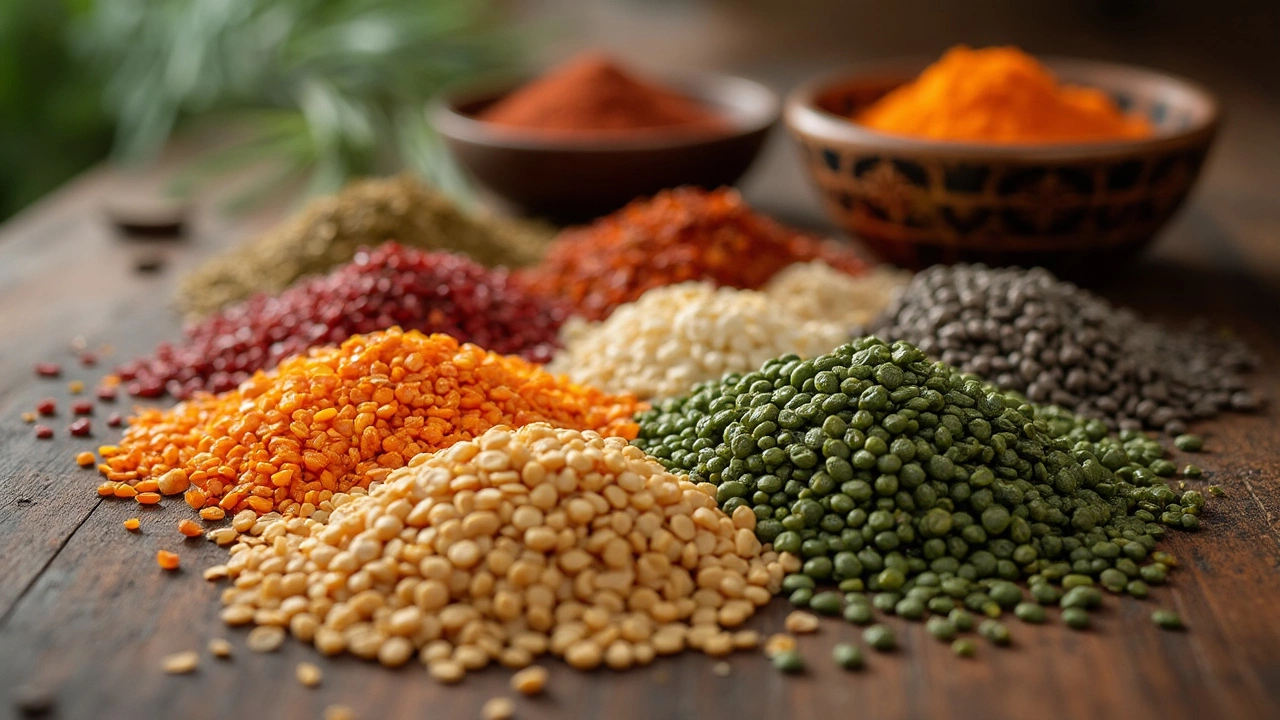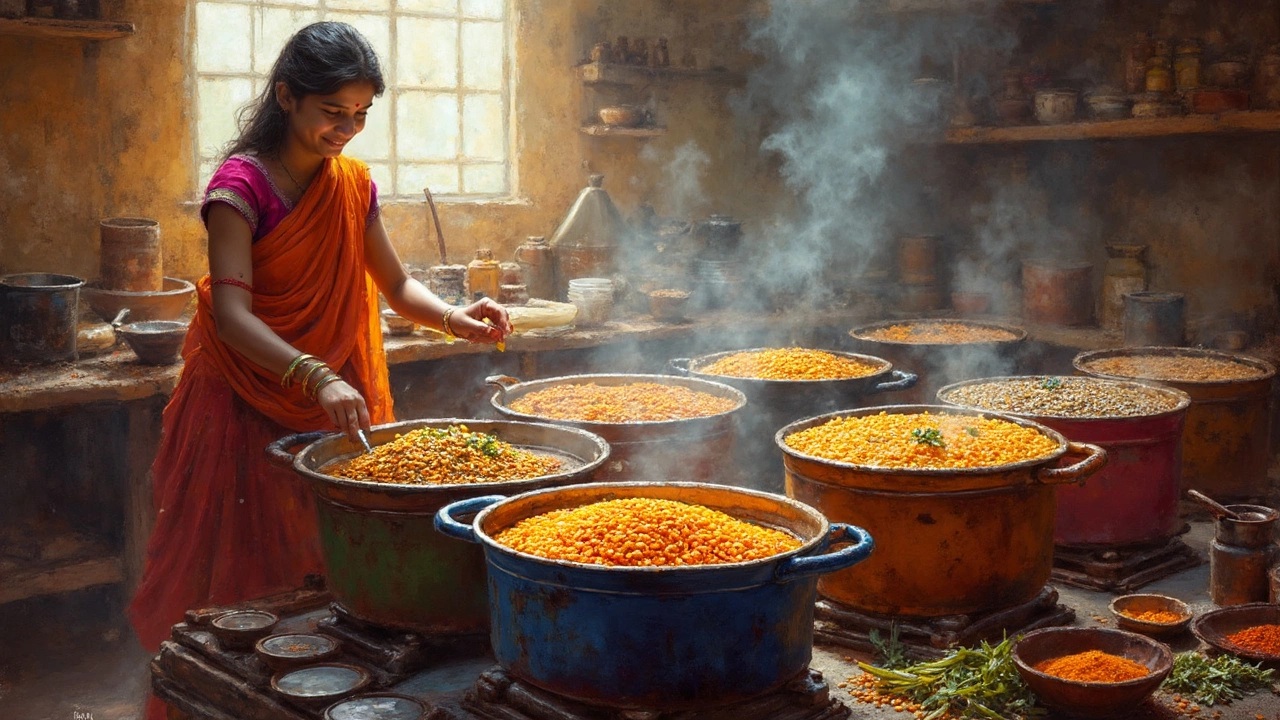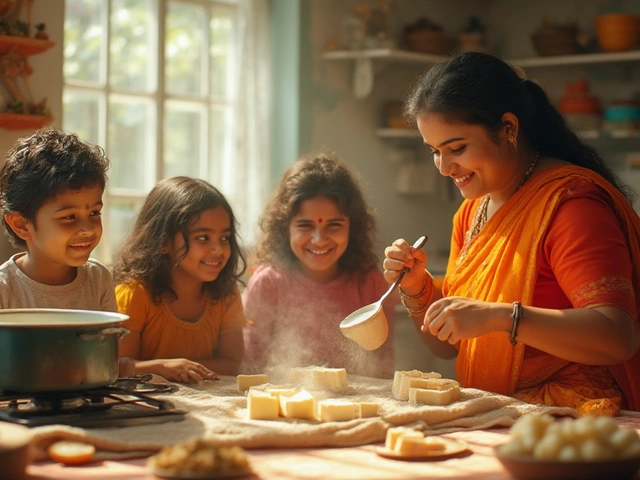If you've ever found yourself puzzled over how long to cook lentils, you're definitely not alone. These little legumes are a kitchen staple, but getting them just right requires a bit more know-how than simply throwing them in a pot. But worry not, I've got some helpful tips.
First things first: not all lentils are the same. You've got your red, green, brown, and black varieties, each with its own quirks. Red lentils cook super fast—around 15-20 minutes—as they tend to break down easily, perfect for creamy dals. On the other hand, green and brown lentils keep their shape better, needing about 25-30 minutes. Black lentils, known as beluga, might take slightly longer, sometimes up to 40 minutes.
Before you start cooking, it's a good idea to give lentils a quick rinse to remove any dust or debris. You don’t have to soak them like beans, but a rinse can make a difference. Keep in mind, more often than not, salt is better added towards the end of cooking. Ever wondered why? It has something to do with keeping the lentils from toughening up.
Timing is everything, and there’s a sweet balance between maintaining a gentle simmer and letting things bubble too vigorously. No one wants mushy lentils unless of course, that’s the goal! Great lentils are about understanding that sweet spot, and more importantly, knowing you’ve got those tips to hand.
Types of Lentils
When it comes to lentils, variety is the spice of life. Each type of lentil brings its own unique flavor, texture, and cooking time to the table. Understanding these nuances can help elevate your lentils cooking game to the next level.
Red Lentils
Red lentils are a favorite for many dishes, especially when you're in a hurry. These guys cook up faster than any other lentil—about 15-20 minutes—and have a knack for breaking down into a creamy consistency. They're your go-to for making a perfectly smooth dal recipe. Plus, their sweet, mild flavor makes them super versatile.
Green Lentils
With their peppery taste, green lentils hold their shape the best among their fellow legumes, needing about 25-30 minutes to cook. They work wonders in salads or as a side dish where you don’t want the lentils to turn mushy. Ever tried a warm green lentil salad with roasted veggies? It's a game-changer!
Brown Lentils
Browning the competition, these lentils are the most common type you'll find in stores. They’re flexible, adapting to most dishes, and also take around 25-30 minutes to cook. They’re perfect for soups and stews because they don't break down completely, giving you that hearty texture.
Black Lentils
Known as 'beluga' lentils because they resemble caviar, black lentils hold their shape beautifully and are rich in flavor. They take a bit longer to cook—close to 30-40 minutes—but they're worth the wait. Packed with nutrients, they add an earthy touch to salads and side dishes.
Here's a quick table to help you out:
| Type of Lentil | Cook Time (minutes) |
|---|---|
| Red Lentils | 15-20 |
| Green Lentils | 25-30 |
| Brown Lentils | 25-30 |
| Black Lentils | 30-40 |
Each lentil type has its place in the culinary world. By knowing your lentils, you’ll not only perfect your meals, but you'll also add another dimension to your lentils preparation skills.
Preparation Steps
So, you've got your lentils and you're ready to cook. What now? Let's break it down into some simple steps that'll make cooking these protein-packed grains a breeze.
Step 1: Sorting and Rinsing
Before you dive into cooking, pour the lentils onto a tray or plate and give them a once-over. You're looking to pick out any small stones or debris. It might sound tedious, but it pays off. Once sorted, give them a rinse in a colander under cold running water. This helps to clear away any dust or dirt.
Step 2: Measuring
What’s the right amount to cook? For each cup of dry lentils, you're going to need about 3 cups of water. Now, I know it's not an exact science, but trust me, this ratio works along fabulously, especially if you’re trying to nail that perfect texture.
Step 3: Adding to Pot
Here's where things get cooking. Place the lentils into a large pot and cover them with the water. A little extra water won’t hurt, but be sure to steer clear of adding salt yet. We want them to cook evenly without any roadblocks.
Step 4: Bringing to a Boil
Keep the heat moderate, bringing the lentils to a gentle boil. Once boiling, reduce it to a simmer. A soft bubble is what you're aiming for. This ensures the lentils cook through without falling apart.
Some Lentil Fun Facts:
| Type of Lentil | Cooking Time (Minutes) | Best Use |
|---|---|---|
| Red Lentils | 15-20 | Creamy dals |
| Green Lentils | 25-30 | Salads |
| Brown Lentils | 25-30 | Stews |
| Black Lentils | 30-40 | Soups |
These tips should have you well on your way to expert-level lentil cooking. Remember, if you leave them unattended, they might overcook, so keep an eye on them. Happy cooking!

Cooking Techniques
So, you’re ready to cook some lentils. Having the right method can make all the difference in achieving that perfect texture, and we’ll go through some tried-and-true techniques.
Stovetop Method
The classic way to cook lentils is on the stovetop. It’s as straightforward as it gets. Start by adding your rinsed lentils into a pot and cover them with water or broth using a 3:1 ratio. Heat them over medium to high heat until they reach a gentle simmer. This is key—a rolling boil might spell disaster for your dal recipes, making the lentils break down too quickly.
Once simmering, adjust the heat. Cover loosely with a lid and let them cook for their specified time—remember, red lentils take less time, so keep an eye out to prevent mushiness. As they get closer to being done, taste and adjust the seasoning, adding salt if needed.
Pressure Cooker or Instant Pot
For those who are short on time or just love gadgets, the Instant Pot is a lifesaver! You'll want a 3:1 ratio of liquid to lentils here too. After locking the lid, set to high pressure; 10 minutes does the trick for most lentils. Allow for natural release to prevent any mushy surprises.
Microwave Method
Yes, you read that right—lentils in the microwave. This method might not be the go-to for gourmet dishes but it's possible when a stove is out of reach. In a microwave-safe bowl, combine lentils and water (the same trusty ratio), cover with a ventilated lid, and set the microwave to high for 7-10 minutes. Stir occasionally to ensure even cooking.
Flavoring and Extras
The beauty of cooking lentils is all the flavors you can play with. Toss in garlic, bay leaves, or a pinch of turmeric while they simmer. For an added depth, sauté onions and spices before mixing in your cooked lentils.
And just in case you're a numbers person, here’s a quick snapshot:
| Type of Lentils | Cook Time (minutes) |
|---|---|
| Red Lentils | 15-20 |
| Green Lentils | 25-30 |
| Brown Lentils | 25-30 |
| Black Lentils | 35-40 |
All these methods offer a bit of flexibility and fun. With a tweak here and there, you can suit your taste and time. And voilà—you're on your way to mastering lentils cooking!
Troubleshooting Common Issues
Cooking lentils should be straightforward, but sometimes things don't go as planned. Here’s how to tackle common problems you might encounter.
Tough Lentils
If your lentils remain tough after ample cooking time, it could be due to the age of the lentils. Old lentils take longer to cook. They're also affected by hard water, which can impede cooking. Consider switching to bottled or filtered water and try again. Always add acid and salt towards the end of cooking. Salt early, and you risk tough lentils.
Mushy Lentils
When dal recipe simplicity turns into a mushy mess, it’s often because the lentils were overcooked or the heat was too high. Keep an eye on those red lentils; they break down quicker, which is great if you're going for a creamy texture. But if not, reduce the cooking time and watch your heat levels.
Unevenly Cooked Lentils
Uneven cooking often happens when lentils are not properly stirred. Stirring helps distribute heat evenly, so stir gently during cooking. Make sure to use a pot that allows for space and does not overcrowd the lentils. Overcrowding leads to uneven cooking and a mix of some mushy and some undercooked grains.
Foaming
If foaming is an issue, make sure not to cover the pot completely while cooking. Leave a slight opening to let the steam escape without risking a boil-over. Skimming off foam as it appears is another good practice.
For a handy reference, check this quick comparison of cooking times for different lentils and their water ratios:
| Type of Lentil | Approx. Cooking Time | Water Ratio |
|---|---|---|
| Red Lentils | 15-20 mins | 1:2.5 |
| Green Lentils | 25-30 mins | 1:3 |
| Brown Lentils | 25-30 mins | 1:3 |
| Black Lentils | 35-40 mins | 1:3 |
Next time you're whipping up a lentil dish, you'll be armed with the know-how to deal with these bothersome issues efficiently—ensuring your lentils cooking process is as smooth as possible!
- Poplular Tags
- lentils cooking
- dal recipe
- lentils preparation
- cooking tips











